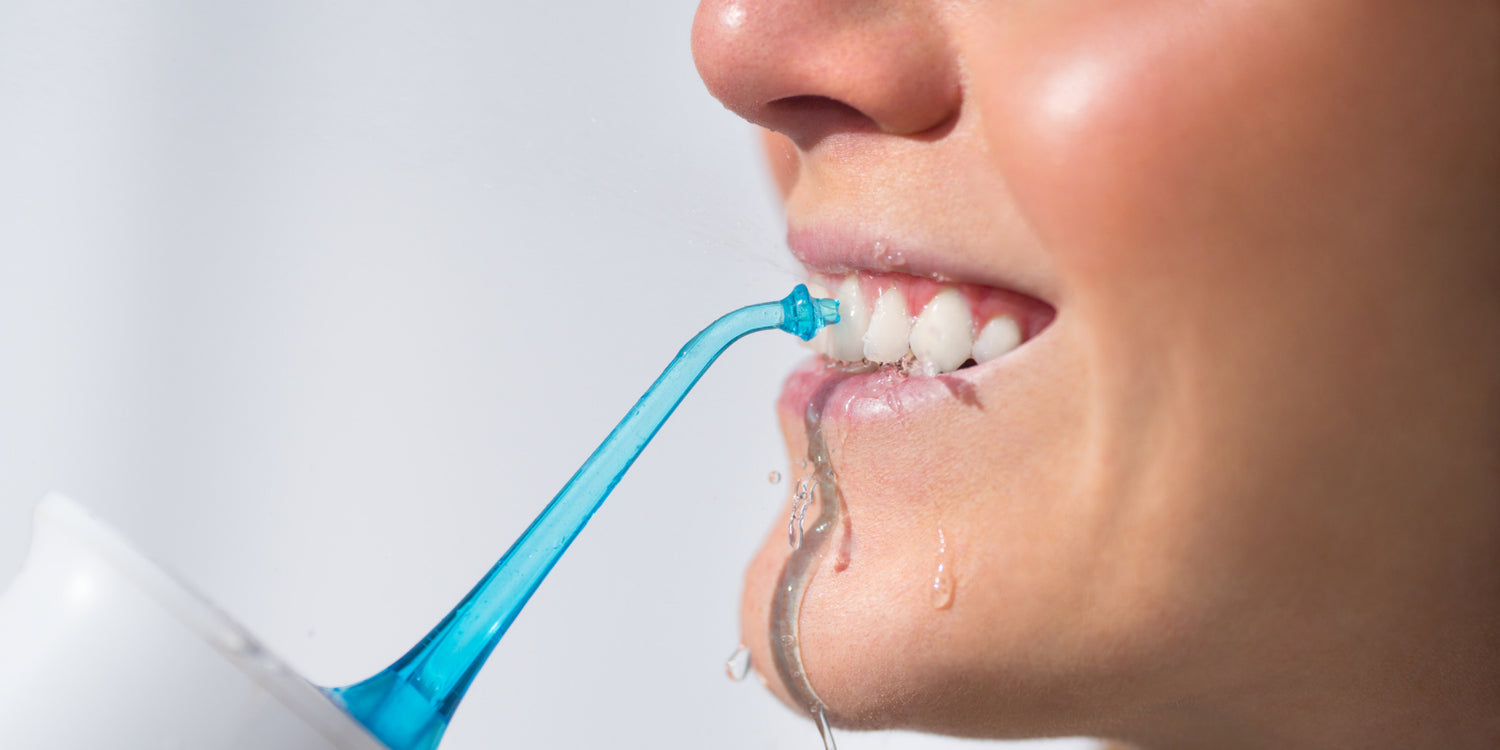If you've been diagnosed with periodontal disease, you're likely on the hunt for effective ways to manage your condition and prevent it from getting worse. Periodontal disease is a serious gum infection that, if left untreated, can lead to tooth loss and other health problems. Traditional dental floss is a common recommendation, but many people find it tedious and difficult to use properly.
That's where water flossers come in. Water flossers, also known as oral irrigators, use a stream of water to dislodge food particles and plaque from between teeth and along the gumline. But do these handy devices really have the power to treat a dental issue like periodontal disease? Or is it just all hype?
So, let’s learn more about water flossers and their effectiveness for managing periodontal disease. We'll cover how water flossers work and whether they are truly effective in dealing with this serious gum disease. By the end, you'll have a better understanding of whether adding a water flosser to your oral hygiene routine is worth the investment.
How Important is Dental Hygiene in Preventing and Treating Periodontal Disease?

Dental hygiene plays a significant role in preventing and treating periodontal disease. Maintaining good oral health practices, such as regular brushing, flossing, and professional cleanings, is crucial in reducing the risk of developing periodontal disease. This condition, which affects the structures supporting the teeth, including the gums and bone, can lead to tooth loss if left untreated. Learning how important dental hygiene and its impact on preventing and treating periodontal disease is essential to maintaining a healthy mouth and overall well-being.
5 Common Treatments for Periodontal Disease
The first common treatment is professional dental cleaning, also known as scaling and root planing. This procedure involves removing plaque and tartar buildup from teeth and gums to prevent further infection and promote healing.
Anti-microbial rinses are another effective treatment for periodontal disease. These rinses contain antimicrobial agents that kill bacteria in the mouth, reducing inflammation and preventing infection.
Medications are often prescribed to fight infection and manage the symptoms of periodontal disease. Antibiotics may be used to target and eliminate specific bacteria, while antimicrobial mouthwashes and gels can control bacterial growth.
In more severe cases, surgeries may be necessary to reduce gum pockets and stimulate healthy tissue and bone growth. Procedures such as gum grafting, flap surgery, and bone grafting can effectively restore gum health and reduce the progression of periodontal disease.
Finally, education for at-home oral care is crucial in managing and treating periodontal disease. Patients should be educated about proper brushing and flossing techniques, as well as the importance of regular dental check-ups and cleanings.
How Effective are Water Flossers for Periodontal Disease?

When it comes to managing periodontal disease, the standard advice from dental professionals is to brush twice a day and floss daily. However, many people struggle to make flossing a consistent habit. This is where water flossers can potentially fill an important gap.
Water flossers, also known as oral irrigators, use a steady stream of pressurized water to dislodge food particles, plaque, and bacteria from between teeth and along the gumline. The idea is that this water-based cleaning action can be more effective than traditional string floss for improving gum health.
But what does the research say about the efficacy of water flossers for treating periodontal disease specifically? Several high-quality studies have examined the impact of using a water flosser on markers of periodontal disease. The consensus from these and other studies is that water flossers can be a highly effective tool for managing periodontal disease, especially when used consistently as part of a comprehensive oral hygiene routine.
So why are water flossers so effective for gum health? There are a few key reasons: improved plaque removal, reduced inflammation, better access to hard-to-reach areas, and increased compliance.
While brushing and string flossing should remain the foundation of any periodontal disease management plan, incorporating a water flosser into your daily oral hygiene routine can provide significant additional benefits. Regular use of a water flosser, in combination with brushing, can be highly effective for reducing gum inflammation, pocket depth, and other markers of periodontal disease.
How Water Flossers Work?

Water flossers, also known as oral irrigators, are innovative dental devices that serve as invaluable tools in maintaining proper oral hygiene. Unlike traditional dental floss, water flossers use a powerful stream of water to remove plaque and debris from between teeth and along the gumline. The water flosser consists of a reservoir filled with water or mouthwash, a pump that propels the water, and a handheld device with a nozzle that delivers it in controlled pulses. When the water is directed into the mouth, it dislodges and flushes out food particles, bacteria, and plaque that brushing and traditional flossing may miss. Additionally, the pulsating action of the water flosser helps stimulate blood circulation and improve gum health. Water flossers are suitable for individuals with braces, implants, crowns, or other dental work. They offer an efficient and effective alternative to traditional flossing, ensuring thorough cleanliness and contributing to overall oral health.
5 Tips on How to Use a Water Flosser for Periodontal Disease

If you are looking for an effective way to manage periodontal disease, a water flosser can be a great tool to add to your dental care routine. Here are five tips for using a water flosser effectively:
- Select the right tip: Most water flossers come with multiple tips designed for various purposes. For managing periodontal disease, it is recommended to use a tip that has a special rubber tip designed to gently massage and clean along the gum line.
- Fill the reservoir with water: Before using the water flosser, it is important to ensure that the reservoir is filled with water. Use lukewarm water and avoid adding any other substances or solutions to the reservoir.
- Set the pressure correctly: Water flossers allow you to adjust the pressure according to your comfort level. For managing periodontal disease, it is recommended to start with a low or medium pressure setting and gradually increase it as you get used to the sensation.
- Direct the tip along the gum line: To effectively clean and manage periodontal disease, it is important to direct the tip of the water flosser along the gum line. Spend extra time focusing on areas that are sensitive or prone to inflammation.
- Clean the water flosser after each use: After using the water flosser, it is crucial to clean it thoroughly. Empty and rinse the reservoir, remove the tip and brush it under running water, and wipe down the body of the flosser with a clean, damp cloth. This will prevent any build-up of bacteria or mold.
Takeaway
Water flossers can be a highly effective tool for managing and treating periodontal disease, especially when used as part of a comprehensive oral hygiene routine. Numerous studies have shown that regular use of a water flosser, in combination with brushing, can significantly improve markers of periodontal health such as reduced gum inflammation, pocket depth, and plaque levels.
The key advantages of using a water flosser for periodontal disease include improved plaque removal, better access to hard-to-reach areas, reduced inflammation, and increased compliance compared to traditional string floss. By dislodging and flushing out food debris, bacteria, and plaque, water flossers can be more effective than manual flossing for improving gum health.
To get the most out of a water flosser for periodontal disease, it's important to use the right tip, adjust the pressure appropriately, direct the water stream along the gum line, and clean the device thoroughly after each use. With proper technique and consistent use, a water flosser can be a valuable addition to any periodontal disease management plan.
While brushing and professional dental cleaning remain the foundation of periodontal treatment, incorporating a water flosser into your daily oral hygiene routine can provide significant additional benefits in the fight against this serious gum infection. For those struggling with periodontal disease, a water flosser is certainly worth considering as an effective and convenient tool in the ongoing battle for better gum health.
Renpho Health Tips
-

Water Flossing vs. String Floss: Which One Should You Adopt for Better Oral Health?
June 11, 2024
Read more >
-

Waking Up with a Migraine: Why it Happens and How to Prevent It
June 10, 2024
Read more >
-

When the World Won't Stop Spinning: Strategies for Managing Vertigo and Migraines
June 5, 2024
Read more >
-

Beyond the Basics: Advanced Strategies for Layering Flavors in Your Cooking
May 31, 2024
Read more >
-

Reach Your Nutrition Goals with These Powerhouse Nutrient Dense Picks
May 21, 2024
Read more >

